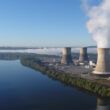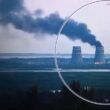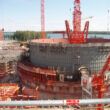Great progress since Chernobyl—and the distance still to go
By Manpreet Sethi |
A disaster is an event of unanticipated severity and scale that causes damage too great to allow quick recovery. It poses dangers that do not remain within a manageable range. Otherwise, a disaster would not be a disaster—only a crisis.
The key to handling disasters, therefore, is to anticipate—and prepare for—the worst. Fortunately, as science and technology have advanced, so too has human capacity to anticipate and respond to disasters. Nature continues to produce extreme environmental events. But today, the hazardous activities in which human beings engage are generally designed with emergency preparedness and response in mind.
Producing nuclear power is one such activity, but in more than 60 years of operations at power reactors—16,000 cumulative reactor-years—the nuclear industry has witnessed only two disasters, at Chernobyl and Fukushima. And only Chernobyl resulted in fatalities—30 very soon after the event and about two dozen more in the years since, with additional deaths projected in the long term. What these figures indicate is that the nuclear industry attaches due importance to the safety of reactor operations. It well recognizes that even two disasters in six decades, only one of them involving fatalities, have been sufficient to create negative public perceptions of nuclear power!
There are three primary ways to address this issue. First, the safety of reactor operations can continually be improved. Second, better emergency preparedness and response can be instituted. Third, improvements on both fronts can be communicated to the public. Both the Chernobyl and Fukushima disasters rendered important lessons along all three of these dimensions—but the focus here is improved disaster preparedness since the 1980s.
The improvement has been substantive. Chernobyl led to the creation of an international legal framework for emergency preparedness and response, as well as a set of related regulatory processes and official guidelines. Implementing all this is a question of national responsibility. But implementation proceeds in accordance with international benchmarks that were largely created after Chernobyl, and in some cases revised after Fukushima.
Steps taken. The International Atomic Energy Agency (IAEA) has been the lead agency in establishing conventions that specify guidelines for handling emergencies. After Chernobyl, the first such instrument to be adopted was the Convention on Early Notification of a Nuclear Accident. Because Chernobyl had made the transboundary implications of nuclear disasters quite conspicuous, nations brought the Convention into force quickly—by the end of October 1986. The Convention on Assistance in the Case of a Nuclear Accident or Radiological Emergency was adopted simultaneously, though it did not enter into force until the next year. Both instruments placed specific obligations on states parties, and on the IAEA, to establish arrangements for nuclear or radiological emergencies. These obligations are strengthened by two later conventions—the Convention on Nuclear Safety and the Joint Convention on the Safety of Spent Fuel Management and on the Safety of Radioactive Waste Management. These four conventions cover quite a wide range of nuclear activities.
Over the years, the IAEA has published a series of safety standards meant to enhance national arrangements for safety, preparedness, and response at nuclear power plants. The agency also works to ensure the compatibility of national, bilateral, regional, and international mechanisms and procedures for disaster response. After Fukushima, the agency's General Safety Requirements were revised to incorporate lessons newly learned. This led to publication of "Preparedness and Response for a Nuclear or Radiological Emergency," a document recommending standards for preparedness and response. Nations can enforce these standards by adopting legislation and regulations; assigning responsibilities to nuclear operators and national and local officials; and establishing regulatory frameworks through which effective implementation can be verified.
But the IAEA is by no means the only agency involved in improving disaster preparedness. In 1986, the Inter-Agency Committee on Radiological and Nuclear Emergencies was created in recognition that cooperation and coordination among agencies is extremely important. Eighteen organizations are part of this mechanism, and they are as diverse as the Comprehensive Nuclear Test Ban Treaty Organization, the World Health Organization, and the International Civil Aviation Organization. The Committee has created a Joint Radiation Emergency Management Plan to harmonize international standards for emergency preparedness and response. The Plan allows for a common understanding of participating organizations' roles, responsibilities, and capabilities—and also provides an overall concept of the group's operations so that quick, coordinated responses are possible.
Steps still to take. After Fukushima, nearly all countries operating nuclear reactors undertook reviews of their emergency response systems—and the Japanese government and the IAEA produced reports highlighting several ways in which emergency preparedness could be improved. One such recommendation is that, during an emergency, public officials must have quick access to informed scientific opinion and expert judgment so they can make good decisions in extreme time pressure. Certain errors committed during the Fukushima emergency—regarding the timing and extent of evacuations, for example—might have been avoided if officials had had better advice.
A second recommendation is that officials be given the resources to correctly classify the severity of an incident as it occurs. That way, the correct set of standard operating procedures can be activated at the earliest possible moment. Classifying an incident as less severe than it really is—or more—can squander precious time and credibility. Third, the provision of accurate information at all levels is crucial. If operators, for example, attempt to conceal an accident (or its extent) from national or international authorities, an appropriate response is only delayed. At Chernobyl, for example, only limited evacuations from the affected area were ordered—and only after 36 hours had passed. To be sure, Chernobyl's immediate fatalities remained very limited compared to many non-nuclear emergencies. But the disaster was felt across the physical, socioeconomic, political, and psychological spectrum of countries in the region. These effects could have been reduced if accurate information had been available. Finally, emergency capabilities must be coordinated across the local, state, and national levels. But this is only possible if operators conduct periodic drills involving all relevant entities and if deficiencies are conscientiously rectified.
Choosing, preparing. Energy is the essence of human progress. For countries seeking an energy-rich future, nuclear power is one of many options. Nations will make their own sovereign choices, based on their own calculations, about nuclear power. Countries that opt for nuclear power well understand that a great deal of legal and regulatory infrastructure is required if they are to operate nuclear sectors safely and sustainably. One element of this infrastructure is emergency preparedness and response. It is incumbent on nations to continually improve their capacity for disaster management. Fortunately, international mechanisms for, and national efforts at, disaster preparedness are making this task progressively easier.

















